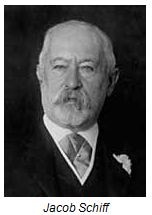Citi Turns 200: National City Bank forges investment bank alliance
In celebration of Citigroup's 200th Anniversary, we are sharing stories from our rich history here on this blog. The fifth installation below covers how Jacob Schiff helped us break into investment banking. Read the fourth installment about our support of Abraham Lincoln and our acquisition of a national charter here.
National City Bank forges investment bank alliance
In 1882, when Moses Taylor died, the customer base of National City Bank consisted largely of companies such as sugar merchants, cotton brokers, coal mines, gas utilities, and southern railroad companies. In the general character of its business, the bank was not very different from its major competitors. It also looked after the fortunes of railroad baron Cornelius Vanderbilt and, especially, Taylor himself. Yet, it was still relatively small. When James Stillman became president after Percy Pyne's resignation in 1891, it had only three officers (the president himself and two cashiers) and a handful of staff. Under Stillman the bank continued to function as a treasury for companies in the Taylor empire, and he began using the bank to support his own business activities through Union Investment Co.
After Union Pacific Railway went into receivership in 1893, National City Bank seized a chance to break into the big league of investment banking. When an attempt to recapitalize Union Pacific was abandoned amid political uncertainties, the task then fell to Jacob Schiff, of investment bank Kuhn, Loeb and Co. Schiff turned to Stillman to help out on the commercial banking side.
To cover the costs of the Union Pacific workout, Stillman committed $200,000 of his own funds to an initial bond issue raising $10.5 million, while National City Bank itself subscribed to $250,000 in a subsequent issue for $3.5 million to meet coupon payments on Union Pacific bonds.
Overall, Schiff and Stillman arranged nine bond issues, underwritten by Kuhn, Loeb and Co. to raise $105 million over the subsequent three years. Stillman's personal investment in these bond issues amounted to $5.8 million, which was even more than the $3.6 million committed by stockbroker and railroad investor Edward H. Harriman and almost as much as the $6.5 million subscribed to by Kuhn, Loeb. National City Bank invested $1.8 million and acted as agent to transfer the funds to government.
